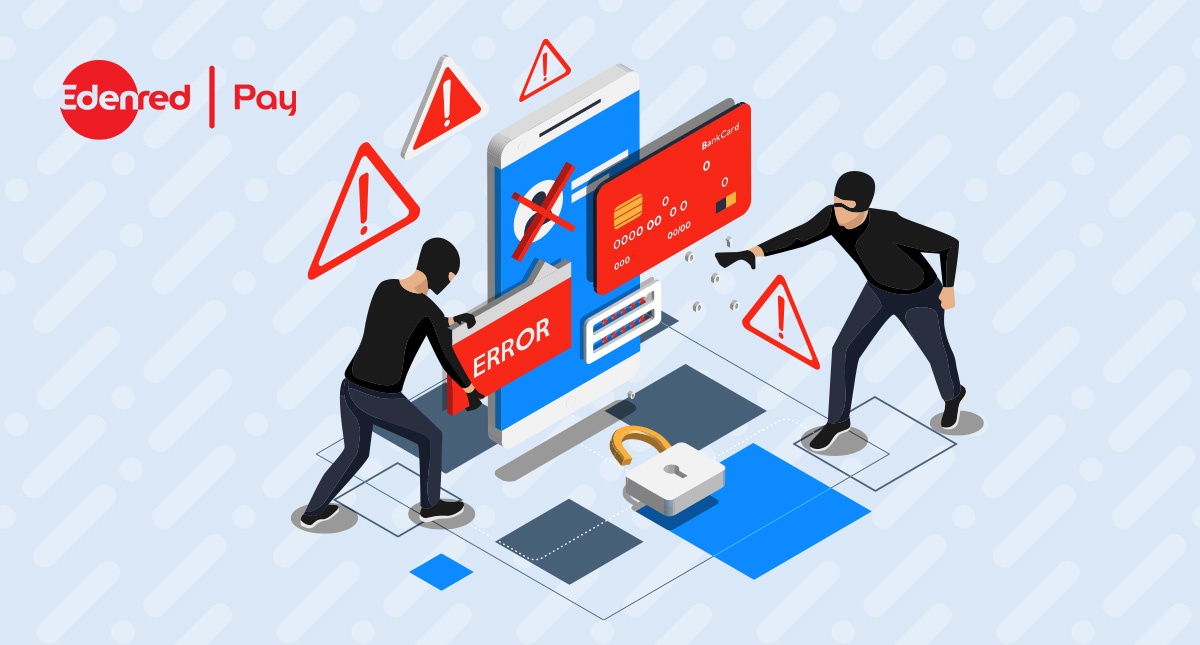Protecting AP From Payment Fraud: How Vulnerabilities in B2B Transactions Create Opportunities for Fraudsters

As business payments continue to evolve and expand, so do the risks of fraud. The large sums of money exchanged in business transactions make them a prime target for criminals who are quick to exploit any weaknesses. For accounts payable (AP)The amount a company owes to suppliers for goods and services received but not yet paid. professionals, the increasing complexity of payment systems, combined with the shift to remote work, has opened the door for fraudsters to attack from multiple angles. Safeguarding your AP processes is more important than ever.
This article will provide some strategies for mitigating your risk of payment fraud.
Types of Fraud Targeting Accounts Payable
Fraudsters use a variety of tactics to exploit weaknesses in business-to-business (B2B) payments. Some of the most common types of fraud your AP department may encounter include:
- Merchant fraud. Fraudsters create fake or dishonest vendors and submit fraudulent invoices for goods or services that were never provided. Without proper supplier onboarding and verification procedures, these invoices may be paid before the fraud is detected.
- BIN (Bank Identification Number) attacks. Bad actors test many card numbers to identify valid ones, which they then exploit for unauthorized transactions. If your department manages virtual or physical cards, this type of fraud can easily slip through the cracks.
- Compromised card fraud. This involves either the physical theft of payment cards or the theft of virtual cardA single-use or vendor-specific digital payment card used in B2B payments to improve control, visibility, and rebate potential. W numbers, often through fraudulent merchants or vendors. Compromised card fraud can lead to significant financial losses, especially if not detected early.
- Phony bank account change requests. Fraudsters may pose as legitimate vendors and submit false requests to change their bank account information. Without thorough verification, AP departments may unknowingly send payments to fraudulent accounts.
- PhishingA type of cyberattack that uses fraudulent emails to trick users into sharing sensitive information like login credentials or banking details. schemes. Cybercriminals send deceptive emails that appear to be from trusted sources, such as suppliers. These emails attempt to trick AP staff into sharing sensitive information like login credentials, payment data, or even making unauthorized payments.
- Business Email Compromise (BEC)A cybercrime in which attackers impersonate executives or suppliers to fraudulently divert payments. C attacks. In BEC schemes, fraudsters gain control of a legitimate business email account, often belonging to a senior executive or trusted vendor, and use it to instruct AP teams to change bank details or make unauthorized payments. BEC attacks can be highly convincing, making them one of the costliest forms of fraud.
Each of these schemes poses a risk to AP departments, but the impact can be mitigated with a proactive, multi-layered approach to fraud prevention. Understanding these threats and staying vigilant are key to protecting your organization from financial losses and reputational damage.
What AP Leaders Can Do to Mitigate Payment Fraud
As an AP leader, it’s crucial to take a proactive approach to mitigate your organization’s risk of falling victim to fraud. Here are some key steps you can implement to strengthen your defenses:
- Implement strong internal controls. Regularly review your internal processes to ensure you have strict controls in place, such as user access permissions, dual approval workflows, segregation of duties, data encryption, and thorough vendor onboarding and verification processes. These controls reduce the likelihood of fraud slipping through unnoticed.
- Verify all vendor details. Before onboarding a new supplier, ensure your team thoroughly verifies their information, including bank account details, tax information (Tax Identification Number), and contact information. Re-verifying this information periodically is also essential, especially when vendors request changes to their bank account details.
- Automate. Leverage technologies such as artificial intelligence (AI)The use of computer systems to simulate human intelligence processes like learning, reasoning, and decision-making—often applied in AP automation for data capture, fraud detection, and workflow optimization. B and machine learning (ML)A subset of AI that allows systems to learn from data and improve over time without being explicitly programmed—used in automation to improve accuracy and prediction. to detect suspicious activity. These tools can analyze payment data and flag potential fraud in real time, helping your team identify red flags that might otherwise go unnoticed.
- Educate your AP team. Continuous training is vital to staying ahead of fraudsters. Ensure your team is up to date on the latest fraud schemes, such as phishingA type of cyberattack that uses fraudulent emails to trick users into sharing sensitive information like login credentials or banking details. emails and fake vendor. Educating your team empowers them to recognize potential fraud attempts.
- Collaborate with industry groups. Stay connected with industry groups and fraud prevention networks to keep informed about the latest trends and threats. Sharing insights with peers and partners can help you stay proactive in preventing payment fraud.
- Regularly audit your processes. Schedule routine audits of your AP workflows and payment processes to identify any weak spots. Address any issues immediately to prevent fraudsters from exploiting gaps in your invoice-to-pay processes and defenses.
- Encourage vendors to use a secure self-service portal. Implement a secure, self-service supplier portalA self-service web portal for suppliers to submit invoices, check payment statuses, and update account information. where vendors can manage and update their own information. This reduces the likelihood of fraudulent bank account change requests being processed, as vendors are held accountable for their updates, and the system ensures proper verification.
Incorporating these strategies will help fortify your AP department against the ever-evolving threat of payment fraud. By combining strong internal controls, automation, ongoing education, and collaboration with industry groups, AP leaders can significantly reduce their organization’s risk.
Conclusion
In the ever-evolving world of business payments, fraud is an ongoing threat that demands constant vigilance from AP professionals. By understanding the various forms of fraud, implementing robust defenses, and leveraging both technology and human oversight, you can mitigate your risk.

Ready to elevate your B2B payments?
Whether you are automating for the first time, ready to refresh your existing technology, or looking for ways to complete the ‘last mile’ of automation, Edenred Pay can help. Let’s chat about your needs.






